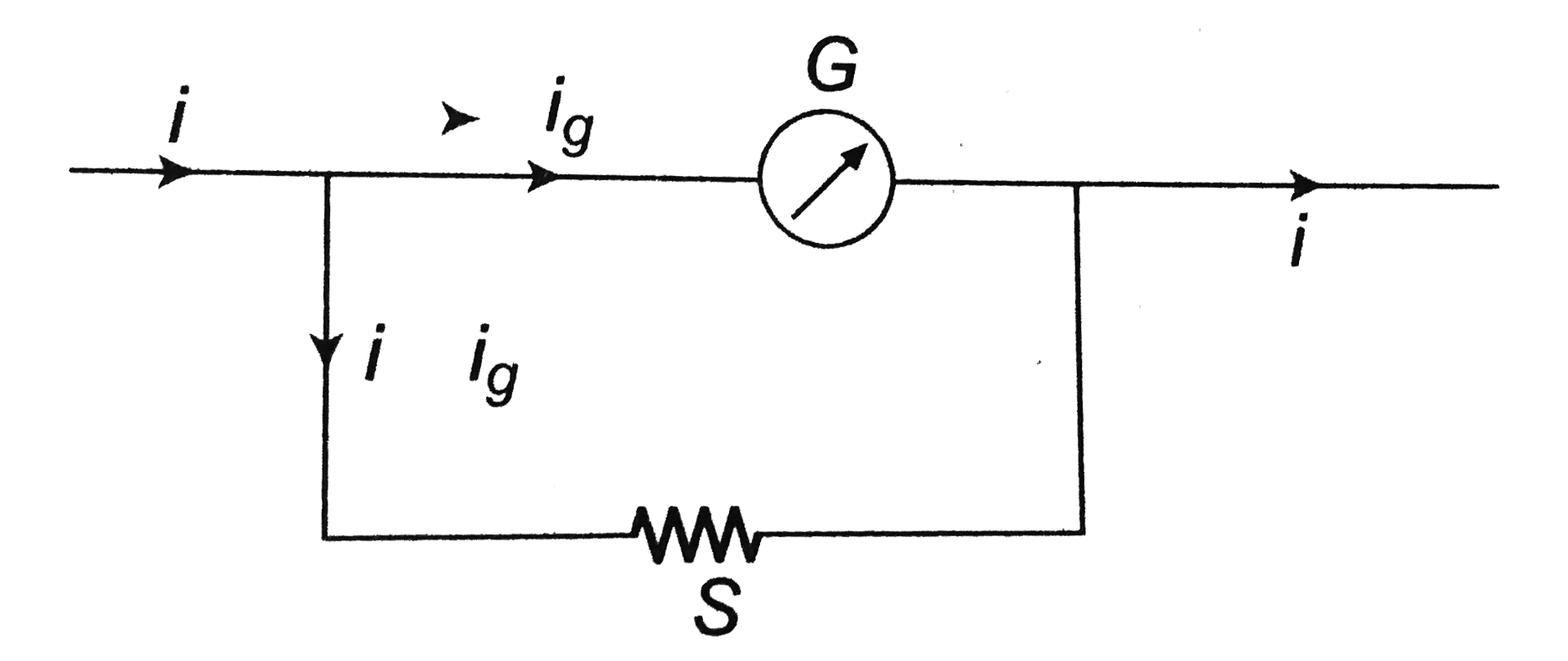A moving coil galvanometer is converted into an ammeter reads up to 0.03A by connecting a shunt of resistance 4r across it and ammeter reads up 0.06A, when a shunt of resistance r is used. What is the maximum current which can be sent through this galvanometer if no shunt is used ?
0.03A
0.04A
0.02A
0.01A
The correct Answer is:C
(a) Let G be the resistance of galvanometer and ig the current which on passing through the galvanomete produces full-scale deflection.
Since G and S in parallel, the potential difference across them will be
ig×G=(I−i1)×S
igi=SS+G
Hence, ig=4r4r+G×0.03
ig=rr+G×0.06
Equaiting Eqs. (1) and (2), we get
4r+G=2(r+G)
⇒G=2r
∴ig=4r4r+2r×0.03=0.02A [from Eq. (1)]

Topper's Solved these Questions
- CURRENT ELECTRICITYBOOK - A2ZCHAPTER - CURRENT ELECTRICITYEXERCISE - Assertion- Reason
14 Videos
- CURRENT ELECTRICITYBOOK - A2ZCHAPTER - CURRENT ELECTRICITYEXERCISE - Section D - Chapter End Test
29 Videos
- CURRENT ELECTRICITYBOOK - A2ZCHAPTER - CURRENT ELECTRICITYEXERCISE - Section - C
1 Video
- ATOMIC PHYSICSBOOK - A2ZCHAPTER - ATOMIC PHYSICSEXERCISE - Section D - Chapter End Test
30 Videos
- DUAL NATURE OF RADIATION AND MATTERBOOK - A2ZCHAPTER - DUAL NATURE OF RADIATION AND MATTEREXERCISE - Section D - Chapter End Test
30 Videos
Similar Questions
A galvanometer is being converted into an ammeter by joining a shunt across it. Higher the range of ammeter __________ is the value of shunt resistance.
View SolutionIn the previous problem, the galvanometer is converted to an ammeter, which can read the current up to 1.5 A, and it is connected to a shunt of resistance R. what is the value of R ? Also calculate the resistance of ammeter.
View Solution
Knowledge Check
A moving coil galvnometer is converted into an ammeter reading up to 0.03A by connecting a shunt of resistance r4. What is the maximum current which can be sent through this galvanometer if no shunt is used (here r=resistance of galvanometer)
A0.004AB0.005AC0.006AD0.008AA galvanometer of resistance RG is to be converted into an ammeter, with the help of a shunt of resistance R. If the ratio of the heat dissipated through galvanometer and shunt is 3:4, then
AR=34RGB43RG=RC9R16=RGD16R9=RGIf the galvanometer current is 10 mA, resistance of the galvanometer is 40Ω and shunt of 2Ω is connected to the galvanometer, the maximum current which can be measured by this ammeter is
A0.21AB2.1AC210AD21A
The shunt required for 10% of main current to be sent through the moving coil galvanometer of resistance 99Ω will be-
View SolutionA voltmeter reading upto 10 V has a resistance of1000Ω. It can be converted into an ammeter reading up ot 10 A by connecting a shunt of
View SolutionStatement I : If galvanometer is converted into an ammeter and milliammeter then the shunt resistance of ammeter is lower than that of milliammeter.
Statement II : The shunt resistance must allow more current to pass through in case of ammeter than that of milliammeter
View SolutionA galvanometer of resistance 90 Ω is shunted by a resistance of 10 Ω. What fraction of main current passes through the shunt ?
View SolutionA galvanometer of resistance 50Ω is converted into an ammeter by connecting a low resistance (shunt) of value 1Ω in parallel to the galvanometer, S. If full - scale deflection current of the galvanometer is 10 mA, then the maximum current that can be measured by the ammeter is -
View Solution